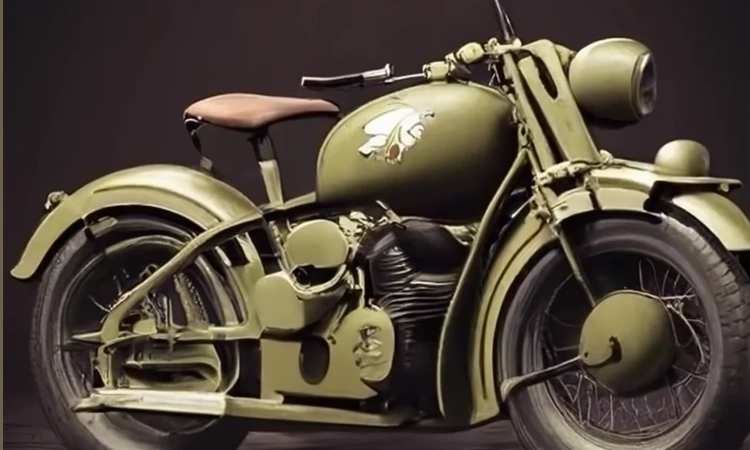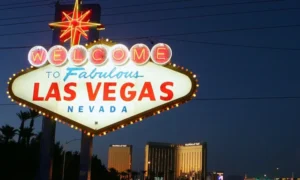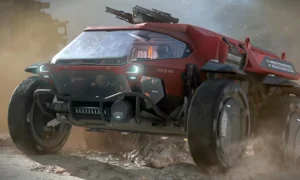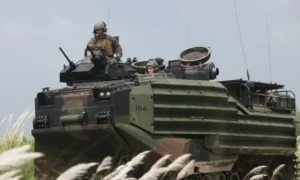Way before drones buzzed overhead or tanks rolled in all thunder and steel, you had these wild eyed maniacs in leather goggles blasting through mud, dodging shell craters on clunky old bikes, clutching paper orders like their lives depended on it (which, let’s be real, they usually did). That was the job WW1 dispatch rider. Talk about guts. And honestly, motorcycles? Total game-changer. War used to move at horse speed. Suddenly it was roaring, mechanical, and unpredictable as hell.
Don’t get me wrong, World War One was absolutely a mess of trenches and machine guns. But it also tossed up a whole new headache: how do you get messages across miles of chaos when your wires keep getting blown up and radios aren’t even a thing yet? Enter the motorcycle faster than any horse, way cooler, and, somehow, more reliable than those early trucks that got stuck in every patch of mud.
Forget anything sleek or shiny. These bikes were gnarly. Heavy as sin, just one gear, hand shifted, cobbled together with whatever parts you could scrounge up. Some had sidecars with machine guns bolted on, because why not? Harley Davidson, Triumph, Douglas, Indian if you recognize those names, it’s ‘cause these bikes earned their legend the hard way.
So yeah, buckle in. We’re about to rip into the world of WW1 motorcycles: the beasts themselves, the maniacs who rode them, the wild missions, and why these battered machines still get collectors and history nerds all misty eyed.
Iconic Models That Defined Military Motorcycling
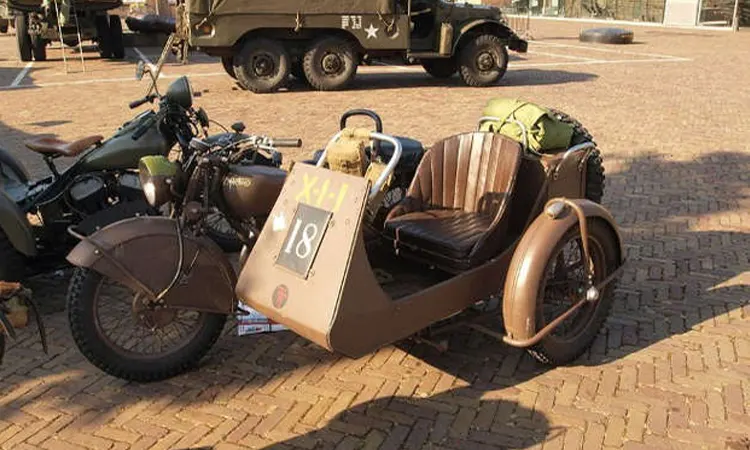
Not all WW1 bikes were on the same level. Some of these things zipped around like caffeinated insects, others were basically armored donkeys. You had your stripped down civilian models doing their best, then you had the real-deal military versions, built tough from the crankshaft up. But the truly legendary ones? Oh man those bikes didn’t just show up, get muddy, and peace out. They kept going while bullets zipped past, slogged through sludge, snow, whatever hell the front lines threw at ’em.
Here’s the real roll call. These aren’t just the survivors they’re the trendsetters that rewrote the rules for military bikes, period:
Harley-Davidson Model J (USA, 1917)
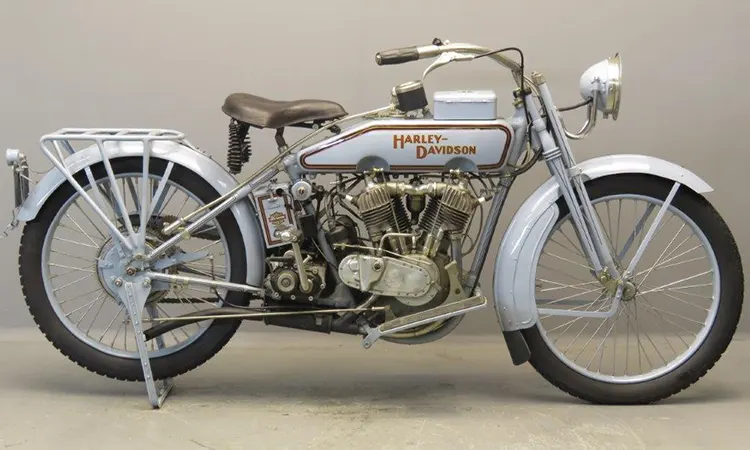
If Uncle Sam could ride a bike, it’d be this beast.
Engine: Big ol’ 989cc V-Twin
Speed: About 60 mph (not bad for something built like a tank)
Perks: Magneto ignition, chain drive, and you could bolt on a sidecar if you felt fancy
Why it mattered: Harley pumped out like 20,000 of these things for the Army. They were stupidly tough, with tires that could basically eat barbed wire for breakfast. Some came with gun mounts. Others doubled as mobile repair shops. Pretty sure every time someone thinks “WW1 American bike,” this is the mental picture.
Indian Powerplus Big Twin (USA)
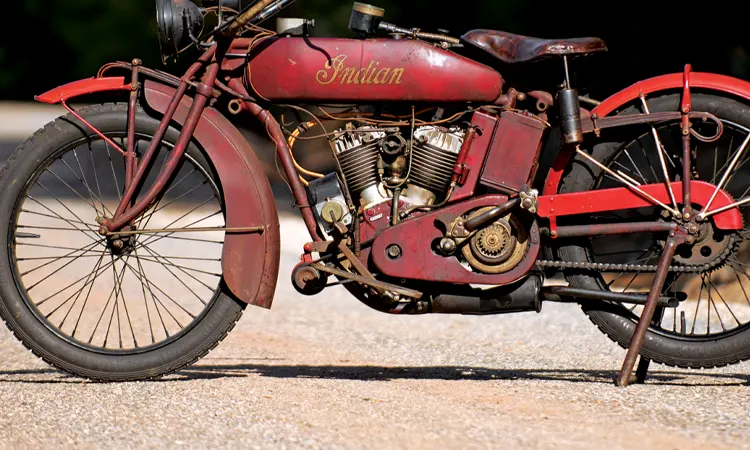
Harley’s arch-nemesis, showing up ready to throw hands.
Engine: 1000cc flathead V-Twin
Bonus points: Smoother clutch, footboards for days, easy to slap on a sidecar
Why it mattered: Indian cranked out over 50,000 of these for the war most ended up rocking machine gun sidecars, which is basically Mad Max before Mad Max was cool. They went all in on the war effort, even if it meant tanking their civilian business for a while. That’s commitment, or maybe just wild stubbornness.
Triumph Model H “Trusty Triumph” (UK)
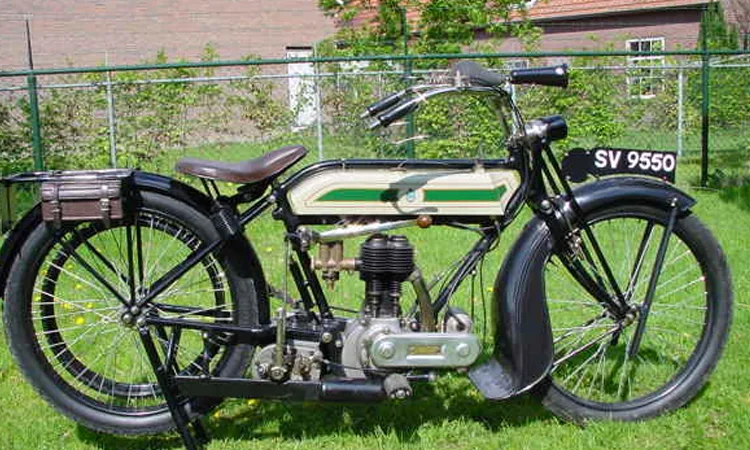
Britain’s MVP, no question.
Engine: 499cc four-stroke single
Big deal: No bicycle pedals, finally—a real motorcycle, not a bike trying to fake it
Why it mattered: Over 30,000 of these dashed around the trenches, mostly hauling messages and riders through the chaos. Reliable as your grandma’s meatloaf and way easier to fix. They called it the “Trusty Triumph” for a reason this thing never let anybody down.
Douglas 2¾hp and 4hp (UK)
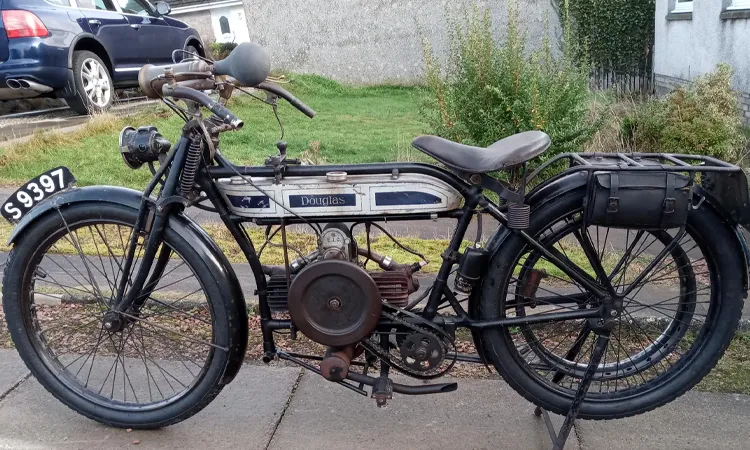
The unsung heroes quiet, but everywhere.
Engine: Flat twin, 348cc (on the 2¾hp version)
Better bits: Super low center of gravity, made balancing a breeze
Why it mattered: If you needed to get somewhere rough, Douglas was your friend. Dispatch riders loved them so did recon patrols, especially in the muck of the Western Front. These bikes just shrugged and kept going, year after year.
FN Four (Belgium)
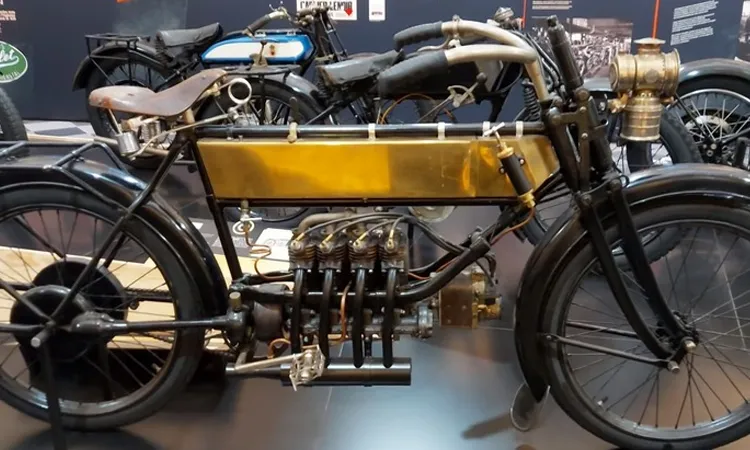
Now for something fancy the luxury import.
Engine: Inline four, shaft drive (for that smooth operator vibe)
Why it mattered: Not as common, but the Belgians and French had a soft spot for these. Basically, it brought a little bling to the battlefield. Later, bikes like the Henderson and Indian Four would copy its style. Nowadays, collectors would sell a kidney for one.
WW1’s Most Iconic Military Motorcycles at a Glance
| Motorcycle Model | Origin | Engine | WW1 Role |
| Harley-Davidson Model J | USA | 989cc V-Twin | Dispatch, utility, sidecar use |
| Indian Powerplus Big Twin | USA | 1000cc Flathead V-Twin | Machine gun sidecars, logistics |
| Triumph Model H | UK | 499cc Single | Message delivery, scouting |
| Douglas 2¾hp / 4hp | UK | 348cc Flat-Twin | Recon, rough terrain riding |
| FN Four | Belgium | Inline Four with shaft drive | Luxury dispatch, officer use |
Technical Highlights to Look For
Alright, so picture this: a World War I military motorcycle isn’t just some old hunk of metal on wheels. Nah, it’s basically the definition of “built under stress.” Nobody cared if it looked cool or broke any land speed records these things just needed to survive the mud, not throw a tantrum when you tried to start ‘em, and, you know, actually get from point A to B.
Most of ‘em had these single or twin cylinder engines that, honestly, wouldn’t impress your lawnmower today. Manual spark advance, clutches that felt like arm wrestling a bear, and brakes? Haha, good luck stopping on a dime (or at all). Suspension? Sometimes, if the universe was feeling generous.
But here’s the kicker: what made these bikes legends was how simple they were. Belt or chain drive, beefy steel frames… oh, and don’t forget the sidecar, which could carry anything from a grumpy sergeant to a full-on machine gun. Riding one must’ve been like getting shaken by a giant loud, rough, zero comfort but hey, the thing worked, and that’s what mattered.
If you’re a military bike nerd, you know the magic’s in the details. Stuff like oddball tank shapes, those funky levers, chunky wheel hubs… that’s how you spot the real deal versus some shiny modern wannabe. It’s all in the grit, man.
How WW1 Bikes Were Modified or Armored

Man, World War I just straight up bullied machines. Picture this: mud everywhere, trenches like bad dreams, random explosions going off, and not a single paved road in sight. Those poor motorcycles none of them made it out untouched. And the ones that survived? Yeah, they were probably Frankensteined together by some sleep deprived mechanic in a muddy field. Soldiers didn’t just hop on and ride off they were constantly hacking, patching, and basically remixing these bikes to get the job done.
Let’s talk about the sidecar machine gun setups for a second. Absolute classics. Someone had the brilliant (or unhinged) idea to slap a Vickers or Lewis gun on a sidecar, and suddenly you’ve got a rolling gun platform. Perfect for scouting, ambushes, panic inducing drive bys… British and French troops were all over this. Fast, easy to move, and seriously scary if you’re on the wrong end of it.
Not every modification was about turning bikes into Mad Max war machines, though. Sometimes you just needed to, you know, survive. Canvas splash guards to keep mud at bay. Extra armor plates slapped around the engine or gas tank probably with a prayer or two. Guys welded on spare toolboxes or ammo crates for those never ending rides across nowhere. If they were freezing their butts off, they’d wrap the fuel lines in cloth to keep the gas from icing up, or rig up some hand guards to block freezing wind and flying shrapnel.
Even the exhaust pipes got the “field mod” treatment some got chopped short for stealth, others rerouted so they didn’t just sink into the next mud puddle. Some units even went full arts and crafts: camo paint jobs, stenciled unit badges on the tanks and side panels. Honestly, if it kept the bike running or the rider alive, nothing was off the table.
Where to Find Authentic Pieces and Spare Parts
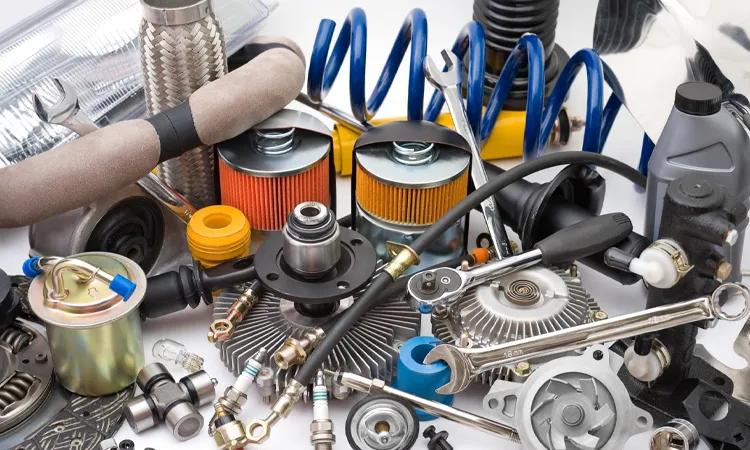
Alright, let’s cut through the nonsense tracking down a legit WW1 military motorcycle? That’s the kind of quest Indiana Jones would lose his hat over. These rides are ancient, barely clinging to existence, usually locked up in some dusty museum or hidden away by collectors who guard their secrets tighter than the crown jewels. Still, if you’re dead set on restoring one, showing it off, or even just hunting for an authentic bolt or two, you gotta know where to poke around and, seriously, who not to get scammed by.
Miltrade Collector’s Paradise
Miltrade is basically the eBay for military gear nerds except with way less junk and way more experts. We’re talking rare WW1 bike parts, tools, weird brackets, you name it. Whether you’re after a crusty old sidecar arm or just wanna nerd out with fellow obsessives, this is the spot. The sellers actually know their stuff, and there’s proper vetting so you don’t wind up with some dodgy replica.
Militaria Dealers & Auction Houses
Find a dealer who actually knows the difference between a WW1 fuel tank and, I dunno, a rusty garden spade. Auctions can be a goldmine too, but only if the house has real experience with old military vehicles not just piles of uniforms and bayonets. The key here: provenance, baby. If they can’t prove what it is or where it came from, walk away.
Restoration Forums, Collector Groups, and All That Jazz
Honestly, forums and groups are where the real magic happens. The Great War Forum, Vintage Motorcycle Club, those niche Facebook groups these folks live and breathe this stuff. You’ll find people selling parts, swapping stories, or just helping you figure out what the heck you actually bought. Sometimes you catch those “quiet deals” before they ever hit public listings.
Museums & Trade Shows More Useful Than You’d Think
Some museums do let go of extras now and then, or they’ll trade with private collectors. And militaria shows? Total treasure hunts, especially if you hit up the big ones in the UK, US, or France. You’ll meet restoration wizards and legit sellers. Bring coffee and comfy shoes trust me on this.
Don’t Get Fooled by Fakes
Here’s the rough part: loads of reproduction junk out there, and plenty of folks looking to make a quick buck. Watch for the telltales original markings, actual age patina, and machining that looks like it was done by a guy in 1916, not a factory last week. If it looks too shiny or the price is suspiciously low, yeah, it’s probably a knockoff.
Final Thoughts
Man, WW1 motorcycles? These beasts weren’t about pampering your backside or breaking land speed records. Nah, they were built to take a beating zipping through cratered mud, hauling gear, ferrying desperate messages while shells exploded left and right. They roared, rattled, and just… kept clawing their way forward when most stuff would’ve croaked.
Any bike that made it out of that mess and still exists? That’s not just some old hunk of metal. That’s living, oily history. Whether you’re obsessed with busted-knuckle engineering, hooked on the drama of the era, or just itching to wrench on something that’s seen more action than a summer blockbuster it’s impossible not to feel the pull. These bikes weren’t just machines. They were the difference between silence and survival.
And hey, if you want to track one down or even score a chunk of one you don’t have to roll the dice on some sketchy back-alley auction. Hit up miltrade.com. This is where the hardcore collectors hang out. Real WW1 bikes, legit parts, battle-worn gear, stories that actually mean something. No fakes. No posers. Just the real deal, verified and vetted, with a whole crew of history nerds who care about the truth, not just the hype.
FAQs
How can I tell a genuine WW1 military motorbike from a reproduction one?
You look at the welding, the casting defects, the patina. If the bike’s too clean or too symmetrical, it likely never saw trench mud. I’ve seen lots of “perfect” bikes that are as far from authentic as you can get.
Were these motorbikes ever deployed on the front lines?
Absolutely. Riders weren’t just riding around with love letters—they were dodging bullets and paying for explosions. Some of the motorcycles even had machine guns on them. Yeah, they went hard.
Which WW1 model is currently most sought after?
I don’t know who you talk to, but the Harley Model J and Indian Power plus are like gold dust. Miltrade’s had a couple of them over the years, and they’re gone in an instant.
Can I actually find spare parts for these things?
You’d be surprised. Miltrade’s got listings that pop up with everything from original spark plugs to full sidecar frames. You just gotta pounce when you see ’em.
Is it worth restoring one, or do I get a completed one?
Honestly, the build’s half the story. Scavenging parts on Miltrade, rebuilding piece by piece it’s like going through time with a wrench in your hand.
